#phylum arthropoda
Text
I'm so in love with arthropods 🥹🥹🥹
0 notes
Text
Phylum Round 1

Arthropoda: Insects, arachnids, crustaceans, and others. The largest and one of the most diverse phyla on Earth, Arthropods have thrived on every continent and ocean, including Antarctica. Their most defining feature is their exoskeleton, which provides both support and protection - Arthropods have developed a number of adaptations to overcome the drawbacks of, as my invertebrate zoology professor liked to say, "living in a vacuum-sealed medieval suit of armor". They possess body segments that have been specialized for their lifestyles, on land or sea. They have relatively complex brains, and many species have shown remarkable cognition. We have had a complicated relationship with Arthropods since the dawn of humanity; they have been critical food sources, disease-carriers and parasites, essential farming partners, and maligned farming pests for thousands of years.
Brachiopoda: Lamp Shells. Although these shelled animals may look similar to bivalve Molluscs, they are a completely separate phylum. Ancient relics of the Cambrian explosion, these living fossils are identified by their "lophophores", which are spiraling structures with tentacles used to filter feed small plankton and detritus from the waters where they live. These lophophores are similar to those found in Phoronida and Bryozoa, as these phyla are closely related. An anchoring appendage called a "peduncle" keeps them firmly rooted in the sediment, which makes them difficult for predators to dig up. In the Paleozoic, these animals were some of the most prominent reef-builders on Earth, producing impressive structures analogous to modern oyster reefs today.
#cw insects#cw spiders#arthropoda#brachiopoda#animal bracket#tumblr bracket#bracket tournament#poll bracket#phylum round 1#phylum
114 notes
·
View notes
Text
I want Miguel’s pedipussy.

Me and Miguel:

#miguel o'hara x reader#if you get the joke I love you#I love Phylum Arthropoda Class Arachnida Order Araneae
24 notes
·
View notes
Text

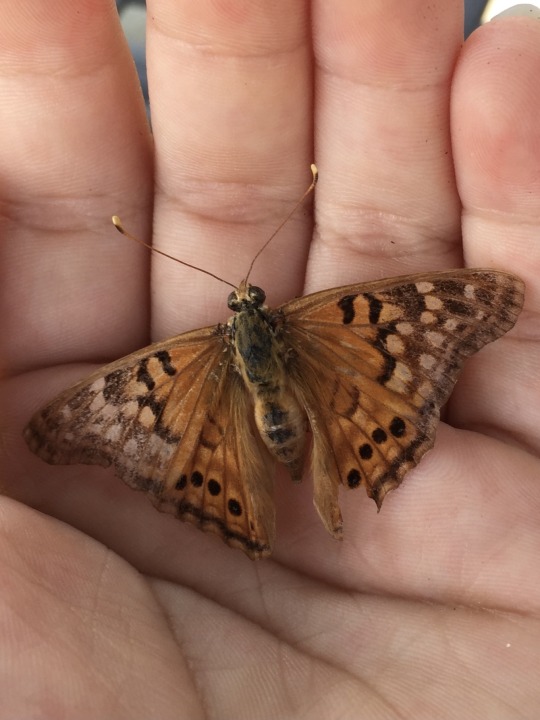
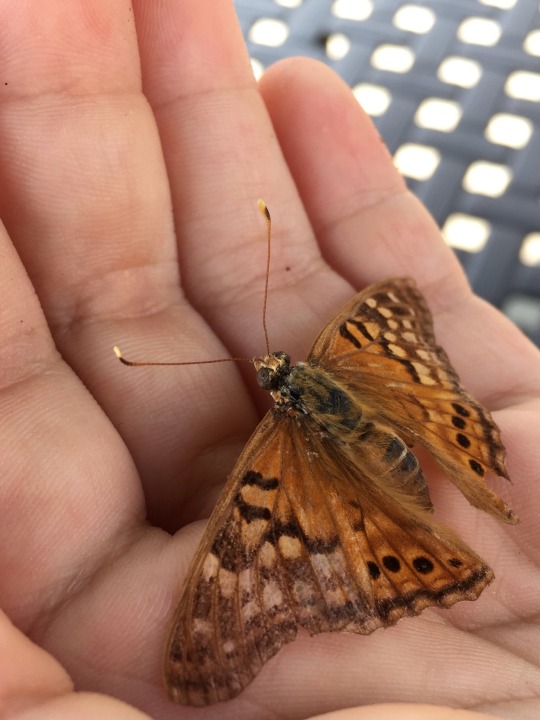
A Tawny Emperor!
#Phylum: Arthropoda#Class: Insecta#Order: Lepidoptera#Family: Nymphalidae#Genus: Asterocampa#Asterocampa clyton#tawny emperors#brush-footed butterflies#butterflies#bugs#insects
4 notes
·
View notes
Text
arthropods
#relationships between different creatures become a lot less impactful once you realize arthropoda is a whole phylum#its literally one level of specification down from being being an animal. like no shit these creatures are related the family tree is huge
0 notes
Text
Round 1 - Phylum Arthropoda

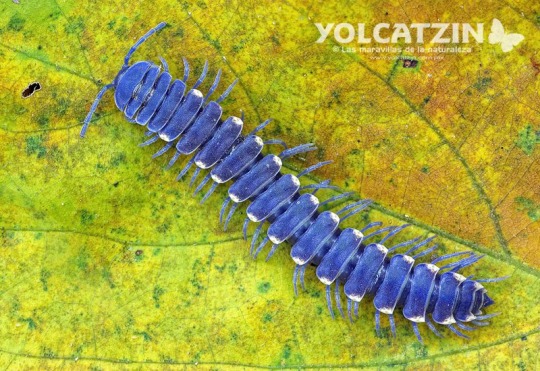


(Sources - 1, 2, 3, 4)
Arthropoda is a phylum of animals that have segmented bodies, possess a chitin exoskeleton, and have paired segmented appendages. They are colloquially called “bugs” though this is often only used for terrestrial arthropods, and sometimes only used for insects specifically.
After Nematoda, this is the most successful phylum, and it is far more diverse, with up to 10 million species! Arthropods account for 80% of all known living animal species. The three major subphyla include the Chelicerates (sea spiders, horseshoe crabs, arachnids, and the extinct eurypterids and chasmataspidids), the Myriapods (centipedes and millipedes), and the Crustaceans (shrimps, prawns, crabs, lobsters, crayfish, seed shrimp, branchiopods, fish lice, krill, remipedes, isopods, barnacles, copepods, opossum shrimps, amphipods, mantis shrimp, entognaths, and insects).
Arthropods are so diverse in fact that it is next to impossible for me to describe a model arthropod. They are important members of marine, freshwater, land, and air ecosystems and are one of only two major animal groups that have adapted to life in dry environments, the others being chordates. All arthropods have an exoskeleton and must molt as they grow, replacing their exoskeleton. Some arthropods go through a metamorphosis in this process. They have brains, a heart, and blood (called hemolymph, though some crustaceans and insects also use hemoglobin). They sense the world through small hairs called setae which are sensitive to vibration, air currents, and even chemicles in the air or water. Pressure sensors function similarly to eardrums. Antennae monitor humidity, moisture, temperature, sound, smell, and/or taste, depending on species. Most arthropods have sophisticated visual systems ranging from simple eyes (ocelli) which orient towards light, to compound eyes consisting of fifteen to several thousand independent ommatidia capable of forming images, detecting fast movement, or even seeing polarized or ultra-violet light. Some arthropods are hermaphroditic, some have more than two sexes, some reproduce by parthenogenesis, some by internal fertilization, some by external, some have complex courtship rituals, some lay eggs, some give live birth, some have prolonged maternal care. The first arthropods are known from the Ediacaran, before the Cambrian era.

Propaganda below the cut:
Insects are the first animals to have achieved flight
The smallest arthropods are the parasitic crustaceans of the class Tantulocarida, some of which are less than 100 micrometres long. The largest arthropod is the Japanese Spider Crab (Macrocheira kaempferi) with a legspan of up to 4 metres (13 ft) long. The heaviest is the American Lobster (Homarus americanus), which can get up to 20 kilograms (44 lb).
Many arthropods are popular pets, including various species of crab, shrimp, isopod, crayfish, mantis shrimp, millipede, centipede, tarantula, true spider, scorpion, amblypygid, vinegaroon, mantis, cockroach, beetle, moth, and ant! Some are even domesticated, including silk moths and honeybees.
Many arthropods are eaten by humans as a delicacy, and farming insects for food is considered more sustainable than farming large chordates. These farmed arthropods are referred to as “minilivestock.”
Arthropods feature in a variety of ways in biomimicry: humans imitating elements of nature. For example, the cooling system of termite mounds has been imitated in architecture, and the internal structure of the dactyl clubs of mantis shrimp have been imitated to create more damage tolerant materials.
Spider venoms are being studied as a less harmful alternative to chemical pesticides, as they are deadly to insects but the great majority are harmless to vertebrates. They have also been studied and could have uses in treating cardiac arrhythmia, muscular dystrophy, glioma, Alzheimer's disease, strokes, and erectile dysfunction.
Shellac is a resin secreted by the female Lac Bug (Kerria lacca) on trees in the forests of India and Thailand. It is used as a brush-on colorant, food glaze, natural primer, sanding sealant, tannin-blocker, odour-blocker, stain, and high-gloss varnish. It was once used in electrical applications as an insulator, and was used to make phonograph and gramophone records until it was replaced by vinyl.
One of the biggest ecosystem services arthropods provide for humans is pollination. Crops where pollinator insects are essential include brazil nuts, cocoa beans, and fruits including kiwi, melons, and pumpkins. Crops where pollinator insects provide 40-90% of pollination include avocados, nuts like cashews and almonds, and fruits like apples, apricots, blueberries, cherries, mangoes, peaches, plums, pears, and raspberries. In crops where pollinators are not essential they still increase production and yield. Important pollinators include bees, flies, wasps, butterflies, and moths.
Many arthropods are sacred to humans. In Ancient Egypt, scarab beetles were used in art, religious ceremonies, and funerary practices, and were represented by the god Khepri. Bees supposedly grew from the tears of the sun god Ra, spilled across the desert sand. The goddess of healing venomous bites and stings, Serket, was depicted as a scorpion. Kalahari Desert's San People tell of a legendary hero, Mantis, who asked a bee to guide him to find the purpose of life. When the bee became weary from their search, he left the mantis on a floating flower, and planted a seed within him before passing from his exhaustion. The first human was born from this seed. In Akan folklore, the cunning trickster figure Anansi/Ananse is depicted as a spider. Western astrology uses the crab constellation, called Cancer, and the scorpion constellation, called Scorpio. Dragonflies symbolize pure water in Navajo tradition. In Anishinaabe culture, dreamcatchers are meant to represent spiderwebs and are used as a protective charm for infants. They originate from the Spider Grandmother, who takes care of the children and the people of the land in many Native American cultures. The Moche people of ancient Peru often depicted spiders and crabs in their art. In an Ancient Greek hymn, Eos, the goddess of the dawn, requests of Zeus to let her lover Tithonus live forever as an immortal. Tithonus became immortal, but not ageless, and eventually became so small, old, and shriveled that he turned into the first cicada. Another hymn sings of the Thriae, a trinity of Aegean bee nymphs. Native Athenians wore golden grasshopper brooches to symbolize that they were of pure, Athenian lineage. In an Ancient Sumerian poem, a fly helps the goddess Inanna when her husband Dumuzid is being chased by galla demons. In Japanese culture, butterflies carry many meanings, from being the souls of humans to symbols of youth to guides into the afterlife. Ancient Romans also believed that butterflies were the souls of the dead. Some of the Nagas of Manipur claim ancestry from a butterfly. Many cultures use the butterfly as a symbol of rebirth. And the list goes on…
cute crab eat a strawbebby:

#round 1#animal polls#listen narrowing it down to just 4 images almost killed me#if arthropods don’t move on to round 2 I will have to take like an extra week off to mourn that I can’t show you all the cool bugs#there’s so many cool bugs guys#i chose the orchid mantis over a trilobite beetle and a poofy little bee fly cause I figured it had broader appeal#and used a horseshoe crab instead of a spider cause people are so Weird about spiders I worried it would impact the numbers#sigh#anyway I’m really hoping for Chordata Arthropoda Mollusca as top three#other phyla are all great but these three would make for the most interesting Round 2 imo
234 notes
·
View notes
Note

fun coincidence on my dashboard
Did you get the same look on your face when you saw it?
The animal shown in the comic is a wood louse, which is a kind of isopod, a group of crustaceans.
The somewhat similar looking animal in the photo is a much smaller creature, a Springtail. These animals are hexapod, the same group of animals that insects are in, so are very closely related to insects, so they are not insects.
Both of these animals are in the phylum Arthropoda, within the Pancrustacea.
297 notes
·
View notes
Note
gently presses button
•
Arthropoda cannot for the life of them seem to stop evolving silk. They have probably done it at least a dozen separate times. Poke that phylum and silk falls out. You may know our friends the spiders and silkmoths, but have you met this lovely Sunamphitoe femorata amphipod, who sews itself a cozy little nest out of kelp?


•
211 notes
·
View notes
Note
i think a lions mane jellyfish would be cool! if youd like to continue to be cursed, id love to see what youd for a sea urchin or starfish mermaid 🧜♀️
If science of specbio intrigues you, please follow my worldbuilding blog at @worldofvonder
So mermaids are fish, straight up. Anything non-fish is not a mermaid. I do take non-fish requests! But they will either be magical creatures that are not mermaids, or they will just not be canon to my world.
There are many aquatic creatures that are not fish, and are in fact not even in the phylum chordata. "Phylum" is the first category of biology in taxonomy, which is the study of classifications.
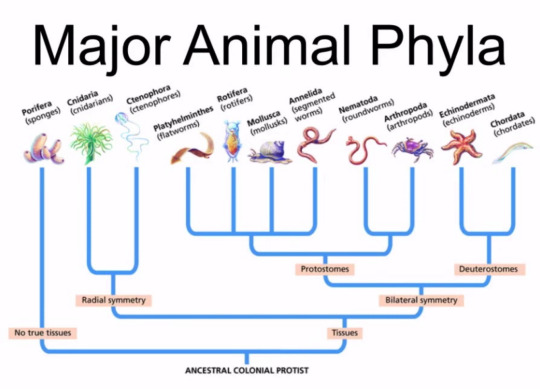
Source: major animal phyla (video lecture!)
The kingdoms of life are: animals, plants, and fungus. Within the animal kingdom, the next step of sorting is phyla. Chordata includes vertebrates (and other animals that have a spinal cord but no bones) and it does not include jellyfish, crustaceans, octopus, and lots of other things. Interestingly, it is believed that chordata and echinoderma share a common ancestor, but they are still different phyla.
Mermaids arose from a ray finned fish, in the clade Actinopterygii. They speciated from there to become the dominant life form of the oceans. Mermaids have a process that allows groups to take on a form that is analogous to a mundane fish. If that fish evolved to eat algae, the mermaid takes on those traits while still able to eat meat. This kinship is not limited to other ray-finned fish, but encompasses many vertebrates that are commonly called "fish." This includes sharks and jawless fish like hagfish. It can include lobe-finned fish like coelacanth, but does not include tetrapods. Tetrapod creatures that resemble mermaids may be centaurs. Centaurs have a completely different origin than mermaids.
Mermaids do not have kin in other phyla. If an invertebrate resembles a human, it is through another evolutionary path than "fish that mimics humans to eat them"
Aquatic creatures and their "mermaid" (humanoid) creature counterparts
Chordata:
Fish (cartiligeous, ray finned, lobe finned): Mermaids
Seals and sea lions: Selkies (selkies are a subspecies of human)
Whales and dolphins: selkie-mermaid hybrids: mammalmers
Arthropoda (crustaceans, arachnids, insects): fairies
Mollusca: (slugs, clams, octopus): Magic mirrors
Echinoderma (sea cucumbers, starfish, urchins, sanddollars): undiscovered
Cnidaria (jellyfish and anemones) and Ctenophora: undiscovered
sponges, anything resembling worms, anything not mentioned: undiscovered
Many phylums have branches that superficially resemble humans despite being completely unrelated to us and each other. This phenomenon is known as anthropisation (not anthropization, which is humans changing landscapes). But don't go thinking humans are special. The same thing happens with horses.
wow there's a lot here. You're welcome lol
71 notes
·
View notes
Note
It’s weird that the three phylums that seem relatively complex (chordata, arthropoda, and mollusca) are so unrelated. like i know they’re all bilaterian, but past that there’s not much similarity. we’re closer related to echinodermata than cephalopods! and tunicates before them! tf!? i like though that chordates evolved from a fucked up juvenile that could reproduce. tell us more about your taxonomy finds.
i feel like the model here is basically that animalia tried a bunch of really shitty blob techniques and then figured out doing things that arent shitty blobs 3 times. and not being a shitty blob is extremely valuable evolutionarily. i mean. look at this diagram

bilateria tried to be shitty worms so many times. and then a couple times it figured out not doing that and became the wonders of the rest of the animal kingdom. cnidaria i think deserves credit tho cnidaria is often. i LOVE the medusa/polyp system
36 notes
·
View notes
Text
Introducing Life, One Phylum at a Time
Welcome to Forms and Phyla! Each day, a short presentation of one of the animal kingdom's 32 described phyla, highlighting its diversity and uniqueness!
Watch the tree of life - and the blog's profile picture - light up before your eyes, as a new facet of animal diversity is revealed each time!
Click here for the latest post (Gastrotricha, the hairybellies), or see below for the list of posts!
Ctenophora
Porifera
Placozoa
Cnidaria
Xenacoelomorpha
Echinodermata
Hemichordata
Chordata
Loricifera
Kinorhyncha
Priapulida
Nematoda
Nematomorpha
Tardigrada
Arthropoda
Onychophora
Chaetognatha
Rotifera
Micrognathozoa
Gnathostomulida
Mollusca
Entoprocta
Gastrotricha
103 notes
·
View notes
Text


Lyssomanes viridis (Magnolia Green Jumper)
Date taken: May 4, 2024
Location: Northwest Florida
Shot with a Panasonic Lumix DMC-FZ70 using the DMW-LC55 macro lens and DMW-LA8 adapter tube, on Programmed Auto mode.
View the iNaturalist observation for this image here.
Taxonomy:
Kingdom: Animalia (Animals)
Phylum: Arthropoda (Arthropods)
Class: Arachnida (Arachnids)
Order: Araneae (Spiders)
Family: Salticidae (Jumping Spiders)
Genus: Lyssomanes (Translucent Green Jumping Spiders)
#photography#biology#nature#arachnids#spiders#arachnophobia#animals#inaturalist#biodiversity#wildlife#zoology#arachnology#araneology
18 notes
·
View notes
Text
Phylum Round 3
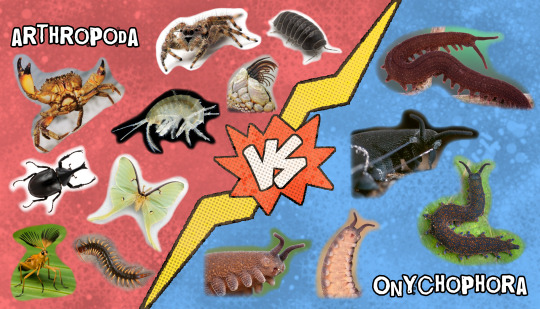
Arthropoda: Insects, arachnids, crustaceans, and others. The largest and one of the most diverse phyla on Earth, Arthropods have thrived on every continent and ocean, including Antarctica. Their most defining feature is their exoskeleton, which provides both support and protection - Arthropods have developed a number of adaptations to overcome the drawbacks of, as my invertebrate zoology professor liked to say, “living in a vacuum-sealed medieval suit of armor”. They possess body segments that have been specialized for their lifestyles, on land or sea. They have relatively complex brains, and many species have shown remarkable cognition. We have had a complicated relationship with Arthropods since the dawn of humanity; they have been critical food sources, disease-carriers and parasites, essential farming partners, and maligned farming pests for thousands of years.
Onychophora: Velvet Worms. This is the only phylum containing exclusively terrestrial members, although their ancestors can be traced back to the Cambrian shallow oceans. Onychophorans are ambush predators, moving with slow smooth steps to creep up on their prey. They have unique mucus glands on either side of their face which can spray jets of sticky slime, which effectively immobilizes their prey. Onychophorans have relatively complex brains, and some even live in social “packs” that live and hunt together. Many species in this phylum are ecologically vulnerable, threatened, or endangered.
#arthropoda#onychophora#animal bracket#tumblr bracket#bracket tournament#poll bracket#phylum round 3#phylum#cw insects#cw spiders
68 notes
·
View notes
Text
Most popular animal tournament
Im just gonna keep going until we narrow it down to one or two animals
-and to the person who says i missed Platyhelminthes- no im not sorry i didnt include f#cking tapeworms. That cannot be your favourite animal.
#tumblr polls#poll#random poll#i love polls#poll time#my polls#polls#halloween poll#poll for funsies#daily polls#character poll#hyperspecific poll#fandom polls#fantasy poll#gender envy poll#marauders poll#poll blog#poll for everyone#poll for you#poll fun#poll tournament#poll game#polladay#polls are fun#polls polls polls#random polls#silly poll#tournament poll#tournament polls#tumblr poll
16 notes
·
View notes
Text

The western honey bee or European honey bee!!
#Phylum: Arthropoda#Class: Insecta#Order: Hymenoptera#Family: Apidae#Genus: Apis#Apis mellifera#western honey bees#honey bees#European bees#bees#insects
4 notes
·
View notes
Text
I got tired of all those theriotype polls and quizzes that only list every subgroup of the order Carnivora and then maybe like two options for birds and reptiles. Wanted to make a more broad one so all animals are represented. Couldn't fit every phylum though but I added an other option, don't worry :)
28 notes
·
View notes